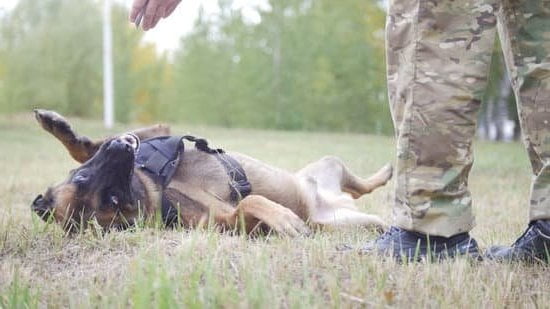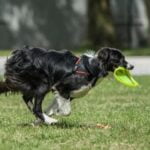Dogs chewing on furniture can be a frustrating and destructive behavior for pet owners to deal with. If you’re wondering how to train your dog not to chew furniture, understanding the reasons behind this behavior is key. Whether it’s out of boredom, anxiety, or even teething, dogs may turn to chewing as a way to relieve stress or simply explore their environment.
To effectively address this issue, creating a safe and stimulating environment for your dog is essential. By providing appropriate chew toys, setting up boundaries, and ensuring they receive enough physical and mental stimulation, you can help redirect their chewing behavior in a positive way. Positive reinforcement training techniques can also play a crucial role in discouraging furniture chewing.
Consistency and patience are key factors in successfully training your dog not to chew furniture. It’s important to remain firm in enforcing rules and rewarding desired behaviors consistently. Additionally, being prepared for setbacks and knowing how to handle them will help you stay on track towards achieving your goal of having a well-behaved, non-destructive pet.
Common Reasons Why Dogs Chew Furniture
Dogs are naturally inclined to chew on things, as it is a normal behavior for them. However, when they start chewing on furniture, it can be a frustrating and destructive habit. Understanding the reasons behind why dogs chew furniture is essential in addressing and correcting this behavior.
Here are some common reasons why dogs may chew on furniture:
- Teething: Puppies, in particular, may chew on furniture during the teething phase to soothe their gums and alleviate discomfort.
- Boredom: Dogs that are left alone for long periods or lack mental stimulation may resort to chewing furniture as a way to pass the time.
- Anxiety or stress: Dogs may also chew on furniture when feeling anxious or stressed, as it provides a form of stress relief for them.
To effectively address and prevent this behavior, pet owners need to create a safe and stimulating environment for their furry friends. By providing appropriate outlets for their chewing needs and addressing any underlying issues that may be causing stress or anxiety, pet owners can help train their dogs not to chew furniture.
Implementing positive reinforcement training techniques is crucial in teaching dogs what behaviors are acceptable and what are not. By rewarding good behavior with treats or praise and redirecting negative behavior with toys or other appropriate items, pet owners can effectively communicate to their dogs that chewing on furniture is not desirable.
How to Create a Safe and Stimulating Environment for Your Dog
Creating a safe and stimulating environment for your dog is crucial in preventing them from chewing on furniture. One of the first steps you can take is to puppy-proof your home by removing any items that may tempt your dog to chew, such as shoes, electrical cords, or loose fabrics. By doing so, you are setting your dog up for success and minimizing the chances of them developing this destructive habit.
Another important aspect of creating a safe environment for your dog is ensuring they have plenty of mental and physical stimulation. Dogs often chew out of boredom or excess energy, so providing them with enough exercise and interactive toys can help redirect their chewing behavior. Puzzle toys, Kong toys filled with treats, and regular playtime can all keep your dog mentally engaged and less likely to turn to furniture as a chewing outlet.
In addition to physical exercise and mental stimulation, it’s also essential to establish a designated area for your dog where they feel comfortable and secure. Whether it’s a cozy crate, a soft bed in a quiet corner, or a specific room in the house, having their own space can help reduce anxiety and prevent destructive behaviors like furniture chewing.
By combining these strategies with positive reinforcement training techniques, you can effectively train your dog not to chew furniture and instead focus on appropriate outlets for their natural chewing instinct.
| Key Points | Benefits |
|---|---|
| Puppy-proofing the home | Minimizes chances of furniture chewing |
| Providing mental and physical stimulation | Reduces boredom and excess energy |
| Establishing a designated area for the dog | Promotes a sense of security and comfort |
Positive Reinforcement Training Techniques to Discourage Furniture Chewing
When it comes to teaching your dog not to chew on furniture, positive reinforcement training techniques can be highly effective. Instead of punishing your dog for unwanted behavior, focus on rewarding good behavior instead. This will help your dog associate positive actions with desirable rewards, making them more likely to repeat those behaviors in the future.
One way to use positive reinforcement is by providing your dog with their favorite treats whenever they choose to chew on their toys instead of furniture. You can also offer praise and even some playtime as a reward for good behavior. By consistently reinforcing these positive actions, your dog will learn what is expected of them and be motivated to continue making the right choices.
Additionally, consider utilizing clicker training or a verbal cue such as “good dog” when your furry friend selects their chew toys over furniture. This will help them understand exactly what they are doing right at that moment and reinforce the desired behavior further. Remember, patience and consistency are key when it comes to training your dog not to chew furniture.
Lastly, it’s crucial to remain calm and avoid scolding or yelling at your dog if you catch them in the act of chewing furniture. Negative reactions can confuse your pet and make them associate fear or stress with you, which could impede the training process.
Instead, redirect their attention to a toy they are allowed to chew on and reward them for choosing the right object. With time and dedication, you can successfully train your furry companion not to chew on your furniture.
| Positive Reinforcement Training Techniques | How It Helps |
|---|---|
| Use of treats as rewards | Makes dogs associate positive actions with desirable rewards |
| Clicker training or verbal cues | Helps dogs understand what behavior is being rewarded |
| Avoid negative reactions | Avoids confusion and fear in dogs during training |
The Importance of Providing Appropriate Chew Toys for Your Dog
Dogs have a natural instinct to chew, and providing appropriate chew toys is an essential part of training them not to chew on furniture. By understanding the importance of giving your dog proper outlets for their chewing behavior, you can effectively redirect their focus away from your household items.
Types of Chew Toys
When selecting chew toys for your dog, it’s important to consider their size, breed, and chewing habits. There are various types of chew toys available, such as rubber toys, rope toys, and puzzle toys. Some dogs may prefer softer toys, while others may enjoy harder textures. Experiment with different options to see what your dog responds to best.
Benefits of Chew Toys
Chew toys serve multiple purposes beyond just preventing furniture destruction. They help keep your dog’s teeth clean and healthy by promoting good dental hygiene. Chew toys also provide mental stimulation and can alleviate boredom or anxiety in dogs. By offering a variety of chew toys, you can keep your dog engaged and satisfied.
Introducing Chew Toys Properly
To encourage your dog to use chew toys instead of furniture, make the chew toys more appealing by adding a bit of peanut butter or treats on them. Whenever you catch your dog chewing on furniture, immediately redirect their attention to the chew toy and praise them when they engage with it. Consistency in reinforcing this behavior will signal to your dog that chewing on the toy is desirable.
By providing appropriate chew toys for your dog and actively encouraging them to use these toys instead of furniture, you are setting them up for success in learning not to engage in destructive behavior. Remember that patience and consistency are key when training your dog not to chew furniture, and celebrate the small victories along the way as they make progress towards better behavior habits.
Consistency and Patience
Consistency Is Key
Consistency is crucial when it comes to training your dog not to chew on furniture. Dogs thrive on routine and predictability, so it’s important to establish clear rules and boundaries regarding what they can and cannot chew. Make sure everyone in the household is on the same page when it comes to enforcing these rules. If chewing on furniture is not allowed, then it should be consistently discouraged every time the behavior occurs.
Patient Training Process
Training your dog not to chew on furniture will take time and patience. It’s essential to remember that dogs do not understand human language like we do, so they need consistent repetition and reinforcement to learn what is expected of them. Be patient with your furry friend as they learn these new behaviors. Positive reinforcement techniques, such as rewarding good behavior with treats or praise, can go a long way in helping your dog understand what is acceptable behavior.
Seeking Professional Help
If you are struggling with training your dog not to chew furniture, don’t hesitate to seek help from a professional dog trainer or behaviorist. These experts have the knowledge and experience to assess your specific situation and provide customized training plans for you and your dog. They can also offer guidance on effective training techniques that may work best for your individual pet. Remember, every dog is unique, so what works for one may not work for another.
By being consistent in enforcing rules, patient in the training process, and seeking professional help if needed, you can successfully train your dog not to chew on furniture. Remember that this process takes time and effort but with dedication and the right approach, your furry friend can learn appropriate chewing behavior.
Dealing With Setbacks
It can be frustrating and disheartening when despite your best efforts, your dog continues to chew on furniture. However, it’s important to remember that training a dog is a process that requires patience and consistency. Here are some steps you can take if you encounter setbacks in preventing your dog from chewing on furniture:
1. Identify the Trigger: Pay close attention to when and where your dog is chewing on furniture. Is there a specific time of day or certain room where this behavior occurs more frequently? Understanding the trigger can help you address the underlying cause of the behavior.
2. Increase Exercise and Stimulation: Sometimes dogs chew out of boredom or excess energy. Make sure your dog is getting enough exercise and mental stimulation through activities like walks, playtime, and interactive toys. A tired and mentally stimulated dog is less likely to engage in destructive chewing behavior.
3. Redirect and Reinforce Good Behavior: When you catch your dog in the act of chewing on furniture, immediately redirect their attention to an appropriate toy or activity. Praise and reward them when they choose to chew on their toys instead of furniture. Consistency in redirection and positive reinforcement will help reinforce good habits.
Remember, every dog is different, and what works for one may not work for another. It’s important to stay patient, consistent, and adapt your training techniques as needed. In cases where setbacks persist despite your efforts, consider seeking guidance from a professional dog trainer for additional support on how to train your dog not to chew furniture.
Conclusion
In conclusion, training your dog not to chew furniture is a process that requires patience, consistency, and understanding of your pet’s behavior. By addressing the root causes of furniture chewing, creating a safe and stimulating environment, using positive reinforcement techniques, providing appropriate chew toys, and remaining consistent in your training efforts, you can successfully teach your dog to refrain from this destructive behavior.
Remember that setbacks are a natural part of the training process. If your dog continues to chew on furniture despite your efforts, remain calm and persistent in implementing the training techniques outlined in this article. It may take time for your dog to unlearn this habit and replace it with more appropriate behaviors.
Celebrate every small victory along the way as you work towards eliminating furniture chewing in your dog. By investing time, effort, and love into training your furry companion, you will build a stronger bond while ensuring a happy and harmonious relationship between you and your pet for years to come. Stay committed to the process and enjoy the progress you make in teaching your dog how to behave appropriately while also keeping your furniture intact.

Welcome to the blog! I am a professional dog trainer and have been working with dogs for many years. In this blog, I will be discussing various topics related to dog training, including tips, tricks, and advice. I hope you find this information helpful and informative. Thanks for reading!





